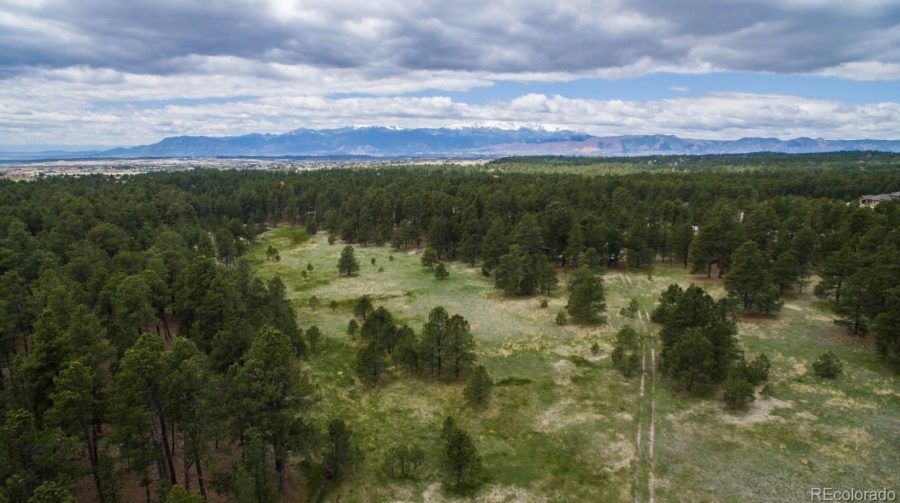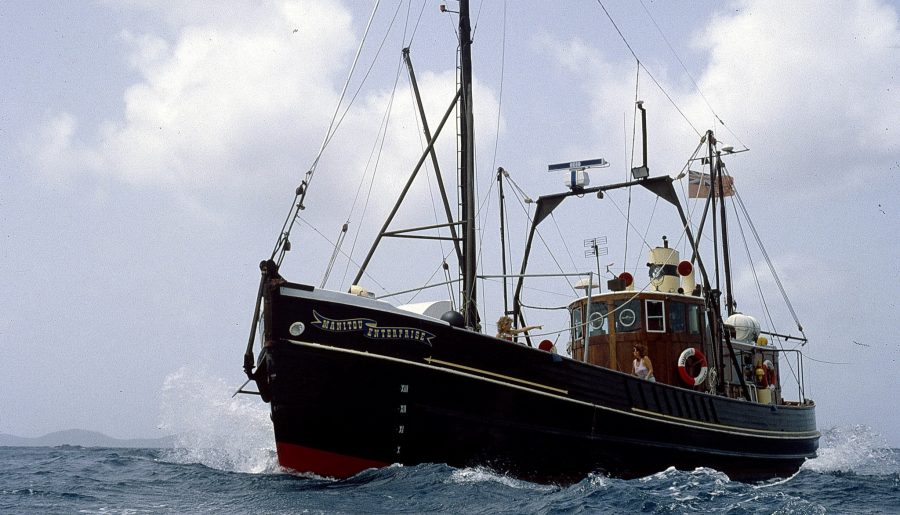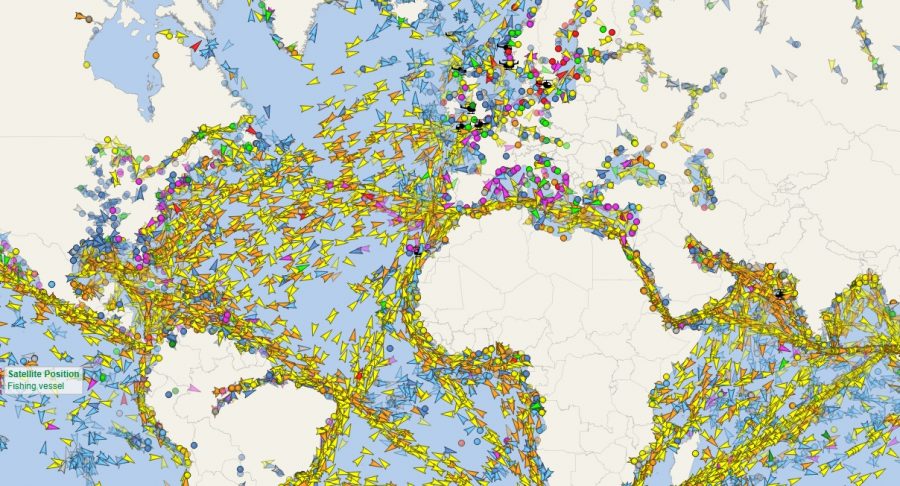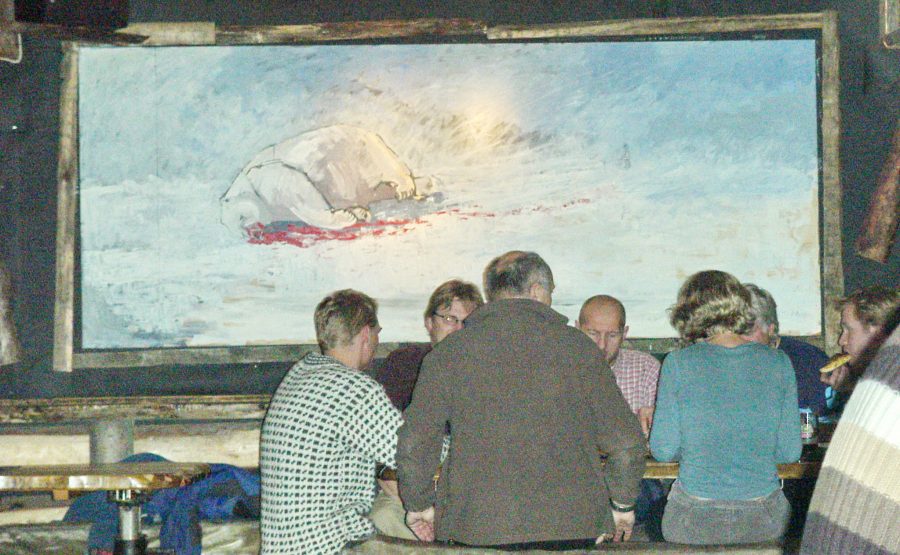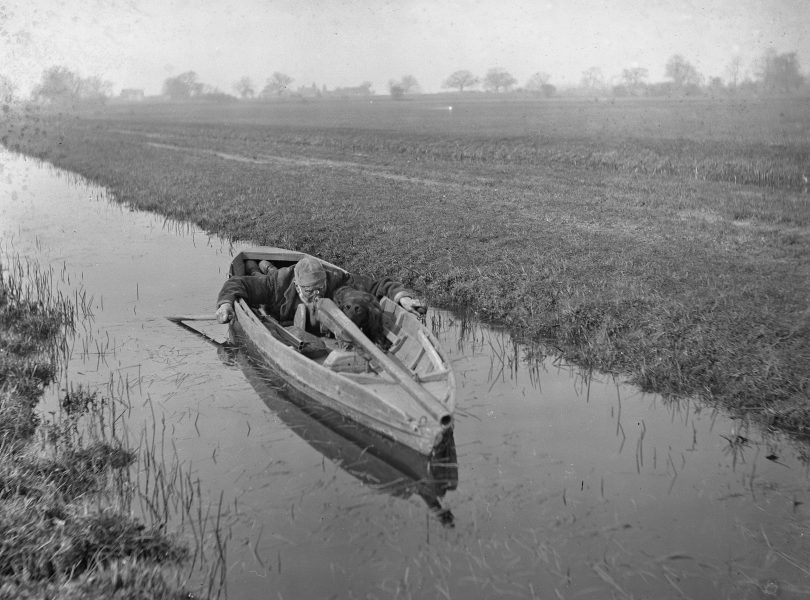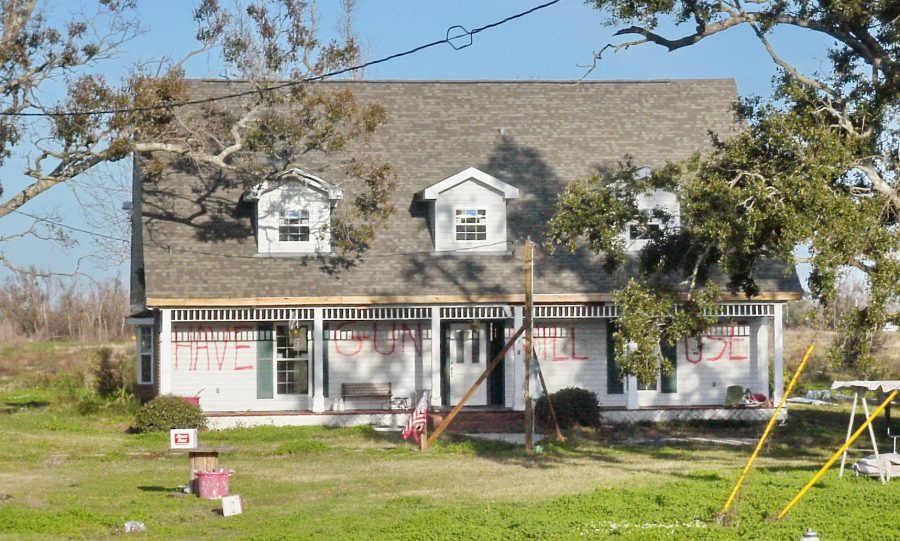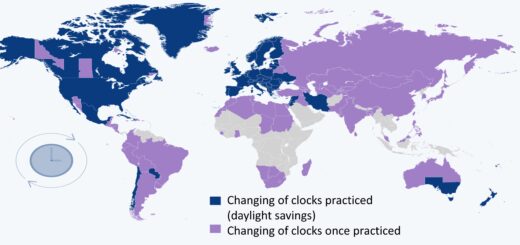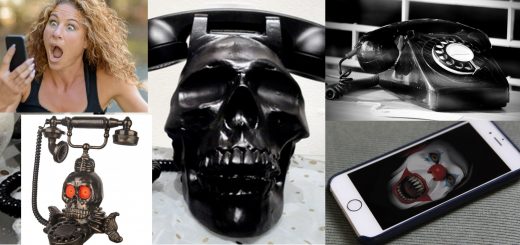Robin Hood, Pirates and Ducks – My Story of Guns
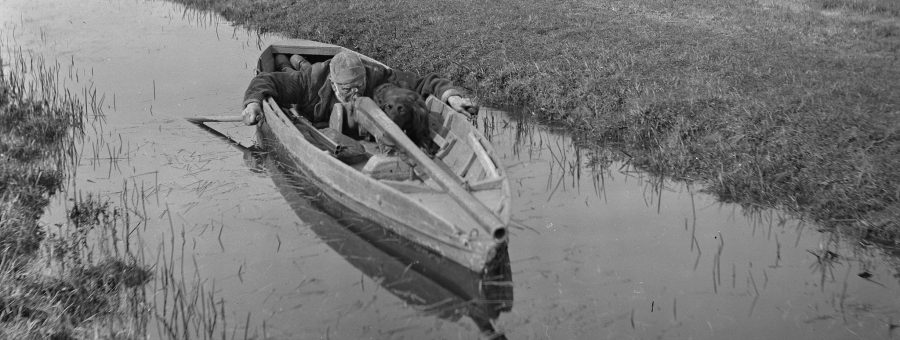
Shôn Ellerton, October 2, 2020
Showers of ducks, polite looters, pirates, the Sargasso Sea and polar bears makes up my story of guns and some of the lessons I learnt from them.
I’d like to write a little something on my thoughts of guns and my personal experience with them as someone who has never owned or wanted one but somehow, or another, had many encounters with them. Writing about some of my experiences gave me a fresh perspective about guns and why they are, paradoxically, a necessary evil. Many of us have had experiences with guns and many of us have stories to tell about guns. Some good, some bad. For the most part, in day-to-day life, I never see a gun, except in front of a screen. Never handle a gun. Never dream of owning one. Frankly, I don’t like guns at all. However, like the common cold, guns are here to stay, and we can only try to do our best to live with them. In this piece, I talk about some of my experiences with guns, some of which are comical, and some of which, changed my perspective on guns and crime. In short, it is my story of guns and how they relate to me.
We never approved of guns in the family
To give a quick history of my upbringing, I was brought into the world by a family who have little or no care for guns. In my childhood days, I was not aware of any of my family owning a gun. I could not possibly imagine any of my grandparents having owned one nor my parents, although, my father, as I eventually found out later, most certainly did out of necessity. I was brought up with the mentality that guns had only one practical use. To kill. Short and simple. I was also aware that guns had other bona fide uses, such as hunting and sports such as clay pigeon shooting and the biathlon. I was into archery at the time, so I didn’t hold the opinion that shooting non-live objects such as clay pigeons or cans on a post with bullets held much in the way of difference between shooting potentially lethal arrows into bulls-eye targets against straw bales. Other than that. Guns were not in approval in my household and the general ethos we shared was that no one really should have them.
Having parents that had separated many years ago, I lived on both sides of the Atlantic a roughly equal number of years up to my thirties; in Colorado and Britain. During that time, I probably experienced the same degree of gun exposure on either side of the ‘pond’.
What’s up Doc?
My first recollection of any real gun, in other words, not on TV or in a book, might have been when I was out with a friend of the family shooting hares and rabbits with a shotgun on a grey cloudy day somewhere near a bushy commons by a village called Tolleshunt d’Arcy in the wilds of Essex, an eastern county of England just north of London. I don’t remember which friend of the family I was with, but I certainly remember the large shotgun. I must have been around five years old at the time. I knew what a gun was, and I expect, most five-year-old’s would, whether it be from watching a cartoon or some royal or military ceremony on TV involving shooting lots of guns into mid-air shortly followed by a squadron of jets flying overhead or perhaps, some old Western repeat featuring cowboys and Indians shooting each other from on top of galloping horses.
I had no idea, exactly, what a shotgun was, nor did I know what the two red plastic cylinders, the size of camera film rolls, being inserted into the gun were. In any case, they looked rather ominous and I wasn’t wrong when I was told that each one was packed with little steel balls. Frankly, I was terrified. Clearly, this was not going to be the same experience as safely watching behind a television screen. How loud will it be? I certainly have vivid memories of being frightened of the noise of the local fireworks display in the nearby coastal village of Tollesbury during the, usually, cold November night of Guy Fawkes night. Safety, not being so assiduously enforced as it is today, meant that you could go very close to the fireworks, which of course, meant lots of loud bangs and pops to scare away most young kids. I was half-expecting something similar with this shotgun. Was I wrong! Another sign of the times, the lack of ear defenders, made this a very unwelcome experience–especially for the unfortunate rabbit–when the gun was raised, and the trigger squeezed. The noise was nothing I had ever encountered until many years later when I was nearly struck by lightning on top of a rooftop in London during my early twenties, a noise that made the open sky sound like a cannon being shot in a tiled bathroom.
Go ahead, make my day!
Moving on to early teenage hood, the transition from fearing guns to being somewhat curious about them took place. From the age of seven, I was brought up in the state of Colorado, a very different place from that of Essex, England. I don’t recall having had much in the way of exposure to guns but around the age of eleven or twelve, that was all about to change. During my years of schooling in Colorado, many of my friends, to my surprise, had fired off a wide assortment of weapons, many of which, had parents who owned substantial gun collections. To be specific, this was in the city of Colorado Springs, a fine city that nestles under the crown of Pikes Peak, a 14,000-ft mountain famed for hosting the Pikes Peak Car Race, a rack-and-pinion railway to the summit, inspiration for Katharine Lee Bates’s song America the Beautiful and the Barr Trail which takes you up eight thousand feet of elevation gain along its gruelling twelve miles to the summit from Manitou Springs. The city is also surrounded by a variety of military installations including the United States Air Force Academy, Fort Carson, Peterson Air Force Base and, most famously, NORAD, the defence installation nestled in a giant cave within Mount Cheyenne as so famously depicted in a wide assortment of Hollywood hits. Not surprisingly, many of our friends and neighbours were affiliated with the military and many had guns, even after they retired from service. Unfortunately, many of their kids had unsupervised access to these guns unbeknownst to their parents of which I can personally testify.
During sixth grade, about the age of twelve, I remember being shown proudly around by my friend, Billy, when he showed off his father’s medals and awards—one of which was the Purple Heart—during his service in Vietnam. I too, would have been proud, to show him my great-great-family’s medals but they were all housed at my grandparent’s house in Essex, a bit of an inconvenience in terms of distance. What I did not expect was for him to ferret through his dad’s socks and underwear in a chest of drawers to unearth a small arsenal of pistols along with an ample supply of ammunition. He pulled out the pièce de résistance, his dad’s 44 Magnum. Now most of us have probably heard of a 44 Magnum and some of us might have tried one out on a pistol range. Anyone who first shoots from one of these guns will know how notoriously difficult it is to shoot anywhere near of the bullseye, let alone hit the target paper itself—even at close range. Furthermore, the noise and the kickback are reminders that this is no ordinary pistol. By that age, I had watched all the Dirty Harry movies of the time and was thrilled at having the opportunity to try this beast out, knowing full well, that we would both be in big trouble if his parents came home unexpectedly early. Billy loaded the weapon and we emerged into the backyard; an enclosure surrounded by wooden fences. The house, itself, was located on the edge of a large field next to Penrose Elementary School and positioned between other similar-looking houses either side. On an upended log, Billy placed various targets comprising empty cans and large juicy pieces of fruit. Bottles, he said, make too much mess, a surprising burst of common sense, especially, considering the next series of actions would be to shoot at the targets, which meant, invariably punching bullet holes into probably several other fences across several other backyards. The thought of the possibility of someone else wandering into their backyard in the line-of-fire was not in our minds. Nor was the prospect of neighbours coming around to enquire about the noise nor the ramifications of the potential discovery of neat little holes in the fence by questioning—and alarmed–parents. From this one childhood experience, I find it utterly unsurprising why so many deaths by guns are caused by children in the United States.
Hey, let’s see if this hurts!
If anyone has seen any of the Jackass movies, a collection of moronic stunts by total nutcases like scuba-diving in a sewage facility or purposely being bit on the privates by a snake—presumably of a non-venomous species–will relate to this next story. At around the similar time of the above story, perhaps a couple of years earlier around the age of ten or so, I recall going with my mother for a get-together with her friends and their children at a secluded house in a wooded region situated northeast of Colorado Springs, charmingly, called Black Forest. However, unlike the Black Forest of Germany, I never remembered the Black Forest as being one of those enchanted forests of majestic spruce and pine trees interlaced with green meadows but rather one with bits of dry pastureland and barbed wire surrounded by vast tracts of unattractive and scrappy-looking pine trees with so much undergrowth, it made the place inhospitable to walk in. There were no cafés, no nice walking trails, no hills, escarpments, or anything else of much interest. It was flat, featureless, and always had a perpetual dark sort of a feel, even in the height of summer. Artists, recluses, and weird people doing weird things like living here. Actually, it’s not really that bad as the photo below shows, but it never struck me as a forest of beauty, although I still maintain weird people do live here.
It was at the basement of this house—most houses here have big basements—all of us kids got together and played. What started out as being lots of Lego building and hunt-around-each-other with Star Trek phaser guns, morphed into testing out the host’s boy’s BB gun. Let it be said, I am not a fan of BB guns, even when I was a kid. We took turns firing the BB gun, and predictably, the choice of targets became more unconventional as the evening progressed. Upstairs, the parents were sipping at their wines and cocktails, blissfully unaware, that downstairs we moved on to practicing shooting the BB gun at each other by taking turns standing still and being deliberately shot in the belly to see what it feels like to be shot by a gun. Kids can do the most stupid of things. By the time it was my turn to be shot, the grown-ups ushered us upstairs as it was time to go. I was saved by the bell. It was, thankfully, not a powerful BB gun but not one of us thought about the consequences of being hit in the eye. None of us certainly had an air of maturity to suggest that perhaps we should be wearing goggles. This is the reason I do not like BB guns or slingshots.
Guns, guns, guns!
All in all, and for many years after, I have held a healthy respect for guns as all of us should. Guns are certainly not uncommon in the United States, say, compared with many countries in Europe, but they are not ‘everywhere’ as the media so likes to portray. Most people, even in the United States, do not have guns. And for those that do have guns, most are responsible enough to lock up their guns unloaded and use only at prescribed shooting locations or for purposes of hunting. The statistics are interesting though, with many sources indicating that there are between 80 to 120 firearms per 100 people in the United States, far higher than other countries with the Falkland Islands and Yemen being a far second and third place behind with around 60 and 55 firearms per 100 people respectively. Statistics do not reveal everything of course. In the small community of Stanley in the Falklands Islands, it is more likely to bump into somebody who owns a gun than you would in the United States, suggesting that there must be people living in the United States who have vast gun collections, possibly one for every day of the year. Who knows? Thankfully, you can use only one gun at a time, or maybe two, if you count shooting a gun with each hand! Yemen’s gun ownership is calculated to be about half that of the United States per capita; however, this could be much higher (or lower, but I doubt it) based on the difficulty of getting reliable data. It has to be said that the third world is not especially renowned for its meticulous enforcement of gun registration and responsible gun ownership.
Ahoy, matey!
It was not until around the age of thirteen until I became astutely aware that not having a gun, in certain situations, can be a grave risk. Prior to 1983, my father had converted an old 60-foot long motor fishing trawler into an ocean-going semi-luxury yacht and then renamed it, Manitou Enterprise, in commendation of the beautiful city of Manitou Springs where we once lived nearby. It was designed to cross entire oceans with its oversized diesel tank, freshwater tanks, deep draught concrete hull and its trusty, large and noisy Gardner diesel engine housed in an acoustically damped engine room. The trade-off with such a vessel is that the living areas were relatively small and cramped, albeit being beautifully varnished with good décor. The engine room was the biggest room on the boat housing a workshop, a diesel generator and lots of valves and pipes wrapped with asbestos. It was a practical vessel and had an interesting history of being used during WWII having had a turret mounted on it to blast away enemy German boats in Norwegian waters that ventured a little too close. Below is a photo of Manitou Enterprise somewhere in the Caribbean with my sister pointing to something or another.
During the year of 1983, my father took the boat across the Atlantic from Portugal to the Caribbean (via Bermuda) with four adventurers who paid and helped out on the boat just to have the experience of crossing the Atlantic on a small(ish) boat. There are many who shell out the big bucks to do this sort of thing you understand. Even if it means being cramped up in small cabins for weeks on end eating from cans of food which, towards the middle of the trip, half the labels had fallen off because they were submerged in water that managed to get into the food lockers. Towards the end of the trip, looking forward to mealtimes was not met with much enthusiasm as it was clearly a case of potluck what can you opened. The only strategy left was to choose from different sizes of cans on the chance that they would have different contents, but most tins looked the same.
Undertaking a crossing of the Atlantic is not an insignificant feat. The distance from Portugal to the Caribbean is one-and-a-half times the distance from New York City to Los Angeles. That is a lot of open water, and not being a particularly fast boat, took around three weeks or so with the occasional stop—Bermuda being one and the others, little swims in the middle of the ocean, weather permitting. At some point in the journey they stumbled upon a very hot day somewhere in the middle of the Sargasso Sea. If you don’t know, the Sargasso Sea is a sea with no land borders right in the middle of the Atlantic Ocean surrounded by a gyre or circulating currents which means that a vast amount of seaweed and, sadly, litter collect in its usually calm waters, much like the ‘plastic island’ of the Pacific Ocean. In the olden days, ships often got stuck there and could stay there for days and days until a little wind picked up. The Sargasso Sea is often perceived as a mysterious place with the occasional ghost ship and its skeleton skipper grasping the helm emerging from the mists. On this occasion, the sea was as flat as a mirror and everyone fancied a swim, so they stopped the boat. The thought of swimming in a flat ocean hundreds and hundreds of miles from dry land in water more than 3000 metres deep, underneath which lies one of the largest, if not the largest, mountain ranges in the world, must have been a surreal and unsettling experience. My father, having sailed for many years with a deep understanding of maritime survival skills and knowledge required of an ocean yachtmaster held reservations of undertaking this venture on a single engine, single prop vessel citing concerns that the risk of being lost at sea is a real possibility, especially during the days before the advent of modern GPS technology. Obscure and arcane skills like celestial navigation and being able to read gnomonic charts were essential. The most important skill was to prepare accordingly. Food, water, batteries, radios, clothing, charts, ropes, rescue equipment, flares, emergency this, emergency that, you name it. But one which is often not thought about is the provision of protecting yourself from others who sail the high seas with devious intentions. Once on the ocean, you are no longer protected by sovereign territory but rather, on international maritime law, an effectively useless deterrent on modern-day pirates. And there are many pirates operating on the high seas, the most infamous of seas being that of the one surrounding the horn of Africa near Somalia.
Modern-day pirates do not, of course, possess the romantic allure of Johnny Depp characters sporting one-eye patches and glittering cutlasses travelling on wooden ornate galleons. Modern day pirates look like you or me and usually make unannounced visits using ordinary-looking boats. Moreover, they often use tactics like asking for help or hiding bad intentions by appearing friendly. Although the oceans are vast, it is a veritable minefield of monster-sized ships, most of which have no ability to take evasive action in time to avoid crushing a small boat nor any intentions of taking any evasive action at all. The Arctic and Southern Oceans are exceptions to the rule with respect to the likelihood of being crushed by other ships as they are, indeed, lonely and inhospitable places plagued by inclement weather, icebergs, and in the case of the Southern Ocean, skyscraper-high waves. Sailors who suddenly find themselves in sight of any boat following you in the middle of an ocean thousands of miles from land should become seriously concerned, or at least, highly alert, and there is a good reason why. First, no one is going to protect you out here because you can forget about international law. Second, the chance of suddenly bumping into another non-commercial vessel in the middle of the Atlantic Ocean is usually not a chance encounter. This could be equated to having just a dozen people scattered around the United States riding around on horseback on the off-chance that any of them might happen to bump into another. I was fascinated to find a website called vesselfinder.com which tracks ships around the world. After switching off all the icons tracking commercial vessels such as cargo ships and tankers leaving only private boats, my theory proved to be not one of exaggeration. And third, it is likely that, should they be pirates, they would, no doubt, be equipped with a sizable arsenal of weapons, many of which will probably include an assortment of military-grade machine guns and hand grenades. Going onto the high seas without firearms of some descript is not smart. The problem with not carrying guns, is that, unfortunate as it may be, there will be others that do. Below photo is a screenshot from the Vesselfinder website.
I asked if I could join my father on the voyage across the ocean, but he declined on account that I would have to take time off school and of the possible risk of not returning safely back to terra firma. Both genuine reasons. By the way, the risk of travelling across the ocean by sailboat is far less than that of a motor vessel because if you lose your engine, you aren’t going anywhere. Before the voyage, my father amassed a reasonable collection of guns including two pistols, a shotgun, a rifle, and a submachine gun. I believe he had a few grenades, but I can’t remember entirely. They were stashed in a long metal locker which sat under one of the long benches in the saloon of the boat, where we ate and convened. Within sovereign waters, the locker had to be sealed and tagged by the appropriate authorities depending in which country you arrived at. In the middle of an ocean, any suspicious activity from a nearby boat should be treated as potential of doing harm which means getting out the pliers to snap the band of the locker and being ready to fire if things get a bit hairy. And this does not mean waiting for the other boat to get too close either. There are pirates with enough firepower to punch holes into hulls; however, our boat had a very thick concrete one, which did bring some peace in mind.
Have you anything to declare?
After my father’s trans-Atlantic voyage, I met up with him in the US and British Virgin Islands (or BVI for short) while he was chartering his boat out to a photography crew taking pictures for Marlboro cigarette adverts. Basically, pictures of rough-looking but charismatic men lighting a cigarette amongst ‘manly’ backdrops like oversized mining machinery, Chinook helicopters, dangerous-looking mountains, and of course, converted trawlers like Manitou Enterprise, the boat the photography crew chartered from us. Incidentally, the flame of the match lighting the cigarette in the photo was performed using a little blue electric light which sat in the palm of the hand. As for the actor ‘lighting’ the cigarette, who looked somewhat like Paul Hogan before he got all his botox make-overs, never smoked, although my father chain-smoked much of the time leading his pet Siamese cats to an early grave presumably by lung cancer. Below is a typical Marlboro advert of the 80s depicting rough-and-tumble men smoking cigarettes.
The Virgin Islands is an interesting place, particularly with respect to the differences in law and order. There are really two sets of Virgin Islands; the American ones and the British ones. Except for St John’s Island, the British Virgin Islands are far lovelier than the American counterparts, and undoubtedly, a lot less dangerous. Provided you have a passport or, presumably, some sort of local exemption, one can easily travel between the two sets of islands using a ferry service which departs from Charlotte Amalie on St Thomas Island on the American side to Soper’s Hole on Tortola on the British side. Forget the much larger US Virgin Island of St Croix which lies much further south from the other islands, the only memory of it I have of transiting through on the flight from Miami to Charlotte Amalie. However, travelling on your own boat from the US Virgin Islands to Soper’s Hole—where you must go as your first port of entry into the BVI—is an often-frustrating experience at best.
After raising the yellow Quebec ‘quarantine’ flag on the boat on the hope that a grumpy customs official will, at some point in the day, take the time to grace the boat with his presence, you can only hope that someone will come around before you eventually run out of food and water. The first thing they check is the guns locker. Now this is how it works. If they do not find a sealed tag marked officially by the BVI, customs will snap off the tag, inspect and itemise every gun including every round of ammunition. Once satisfied, they will seal it up again with a new official tag. Going the other way to St Thomas Island in the US Virgin Islands was a different story. My father was asked to bring every weapon and every round of ammunition to the customs building in Charlotte Amalie for inspection. This was not an easy task considering he had to travel by road from where the boat was docked to the customs house on a mini-motorbike with a very large duffle bag around his shoulders containing the weaponry and ammunition while running the gauntlet of beady-eyed roadside locals, many of whom probably know what the bag contains. Once inside customs house, a very unfriendly place so I understand, they asked him to place all the weapons on the floor and count every round of ammunition while being watched by unsmiling officials. After being itemised, nobody assisted him to place it back in his duffle bag which meant that he was left hunting around for bits of guns and rounds of ammunition before making way back to the boat.
The difference in how the systems work is astonishing really. On the BVI side, you were not even allowed to embark on the island without a thorough customs inspection; however, on the US side, a customs official simply radioed through if you have anything to declare. If you said ‘no’, then it’s usually more than likely they will ask you to lower your Q flag and give you the thumbs up to embark on the island. Say that you have guns, and you’re requested to make the trip, however uncomfortable that may be, along with all your weapons and ammunition to Charlotte Amalie for inspection. And what of weapons being lost or commandeered along the way? Small wonder that there are far more unregistered guns and gun crime on the US Virgin Islands. As for crime, in the BVI, if you are caught with a minor offence like jaywalking, you get sent to Road Town Prison on Tortola awaiting capital punishment by hanging. I am exaggerating of course, but law enforcement and penalties were quite strict, and they did hang people at the prison, although the prison closed fifteen years later in 1997 with prisoners being moved to a newer establishment. Being thirteen at the time, I was permitted to wander alone all-around Tortola or anywhere in the BVI; my father, having a reasonable degree of confidence that I wasn’t going to be violently assaulted, kidnapped or shot by the locals. As for the US Virgin Islands—excepting St John Island–, and especially that of Charlotte Amalie, the biggest town on St Thomas, and indeed, the capital of the US Virgin Islands. It was a totally different story.
Robin Hood to the rescue!
Having a gun on your person is sometimes highly recommended, even if it means taking it with you while dining out. A quite frequent and lucrative business thrived among the robbers of the island, whereby bands of armed looters walked into up-market restaurants requesting that all diners put down their wallets on the tables in front of them, with two or more looters poised with weapons standing nearby, one guarding the entrance and two others extracting money out of the wallets as if they were little donations to the ‘community’. Nobody got hurt and, to my surprise, the looters were quite well-mannered and softly spoken if you can believe that. It seemed to happen as if everyone expected this from time to time and, to be honest, no one made a big fuss of it. It was strangely quiet while those with wallets sat there quietly while their money was being taken. Looking back at it now, I understand why this was all happening because the island had, and probably still has, quite a large population of impoverished and homeless people rubbing shoulders with the affluent and also because I also happened to read The Merry Adventures of Robin Hood. This very thing happened to us on one occasion at The Chart House, one of the best steak-and-seafood restaurants of the day in Charlotte Amalie—they eventually went out of business during the late 90s. My father did have a gun on his possession, but he kept it concealed under a serviette on the table in front of him. When one of the looters came around, he lifted one corner of the serviette to reveal a bit of the gun to him. They both looked at each other quietly with what I can only describe as an ‘understanding’, and then he simply made his way to another table. It was as if there was an underlying ‘law of the gun’ in which both parties had an awareness of the moment and of the underlying consequences which may have ensued should the wrong action be taken. And it was the best course of action. One could argue that a more Clint Eastwood-like approach like pulling the gun out in full view of others and threatening the looters with a pointed gun to be the heroic thing to do, but that would have been the riskiest and stupidest move as the outcome might have been severe or fatal. I learnt a lot from this extraordinary moment.
Living for most of my life in an environment where crime is relatively low and policing levels high, the thought of ever having owned a gun was never on my mind. Why would I need it? However, reflecting on the above experiences, there are many places in the world in which one is, no doubt, safer possessing a gun for the purpose of self-defence. This extends to polar bears if you live in Svalbard—a fascinating place I once visited in 2004, although one is encouraged not to shoot the bear but to shoot at it and deliberately miss on the off-chance that the bear will scuttle away in fright. I took a photo (below) of a rather distasteful painting of a polar bear after being shot hanging in a family restaurant in Longyearbyen, the only town in far-north Svalbard. Well, it looks that way to me.
Gun control, ducks and punt guns
The issue of gun control, ownership and ethics is quite complicated. I despise guns in the way that it only takes one little bullet to wipe away a human being off the face of the planet; however, there is the paradoxical argument that guns, or some other form of deterrent is needed to keep society safe from others. The adage, ‘it’s not the gun that kills but the person behind it that does’ is an accurate statement, although a bit of a tautology at best. Unfortunately, many who are killed by guns are from actions taken by those who have little or no experience with firearms. I once went to a stag party of a friend in Riga. We hurdled off to this underground complex with lots of guns to play with including, I might add, an Uzi machine gun. Unless you know quite a bit about guns, had lots of practice with them and know how to use them safely, guns are especially dangerous. What was so absolutely horrifying about the Uzi was that it had virtually no kickback at all. I could quite happily hold one in each hand and fire simultaneously using hardly any arm muscle while maintaining my position without any effort. These guns are not known for their pinpoint accuracy; however, they are well-known for their fierce reputation of indiscriminatingly scattering bullets far and wide of which one is enough to kill. I remember watching a scene in some Hollywood flick many years ago depicting events in war-torn Somalia in which a young child was shooting at soldiers with an Uzi. I didn’t believe, at the time, that this could be physically possible. But my experience with an Uzi discounted that theory.
I foresee no easy answer to gun control and, unfortunately, I believe we will never solve the problem effectively. However, there are nations and island states where gun control works relatively well, like the very strict quarantine and customs procedures in the British Virgin Islands. Although highly inconvenient and frustrating, it does control the influx of guns. Unfortunately, in large countries with vast borders and vast movements of population, it is nigh-on impossible to use such a thorough quarantine and inspection system for anyone arriving into the country. And what about the import of goods via shipping containers? Random spot checks do take place but most contraband passes through the system unchecked. More draconian approaches to gun control, for example, in Britain, where all guns were taken away from owners some years ago—or, at least, made non-functioning—have probably helped to reduce its already relatively low rate of gun crime; however, a black market will always exist as will gun crime.
Gun ownership requires real responsibility centred around knowledge of how guns work, how to use a gun properly, how to store a gun safely, and the legal implications and consequences of using a gun. One of the consequences, of course, is usually someone being killed, so this is clearly something not to be taken lightly. The problem is this. ‘Normal’ people who just want to get a gun because they feel safer having a gun often don’t know half this stuff, which is a shame, because this would drastically reduce gun-related deaths. In the United States and most countries in the world, there is no obligation at any time of one’s life to learn how to understand and handle a gun, unless you are trained in a career that needs one or join the military. Countries that have mandatory national service do, of course, train their citizenry on how to handle a gun. It would be an interesting experiment to test if the death count related to firearms is reduced by teaching all children in school how to safely handle and fire a gun and possess the knowledge of what you can and cannot do. Whether it would be a good thing, or a bad thing ethically is an entirely different matter though.
Which brings me on the issue of licencing guns. Not unlike driving a car, a quite capable killing machine, owning a gun should warrant the need to have stringent licencing measures. Various types of gun licences should be issued depending on the gun type and, in some cases, the circumstances in which it is required. For example, in England, there is, or once was, an unusual gun licence. A licence to have a punt gun. I was living in Essex at the time and I remember overhearing from someone that they are quite difficult to come by. Picture an extremely long gun firmly strapped to the bow of a rowboat. This gun is no ordinary gun and resembles something like a cross of a blunderbuss and a small cannon, except rather than using shells or, indeed, cannons, an enormous quantity of shot is used. The intention of the punt gun is to wipe out as many ducks as possible with one shot. And this is the thing. You only have one chance to do so because if you miss, the extensive time and effort taken to quietly row to a spot and sit in the boat for hours, earning the ‘trust’ of the ducks, is totally in vain.
As I mentioned. This is no ordinary gun. The gun is fired by either lying belly down with a finger on the trigger or tugging on a cord which sounds easy enough but what is not so terribly easy is to fire at the right moment when one is trying to, with as little noise and movement as possible, line up the boat to point at a congregation of ducks. Hours of serenity and peace is turned into mayhem and pandemonium when the frightened ducks, or what’s left of them, fly all over the place after a blast that can only be described as the sound of a battleship cannon. I’ve often walked along the seawalls around the marshes of Essex as a child and, from time to time, I heard an occasional enormously loud bang coming from somewhere in the distance but never being close enough to see where it came from. Because I only heard one shot, I now take the assumption that it must have come from a punt gun. As for its power, the recoil from a punt gun can be enough to displace a small boat several metres. After triggering off a punt gun, I wonder how many onboard lose balance and then fall overboard while chomping down a Shiphams bloater paste sandwich and then, once flailing wildly in the water trying to get back onboard, being showered by a ‘rain of ducks’. I love the photo below by Sydney Harold Smith in the early 1900s (below) of a man and his dog lining up a punt gun.
Anyway, back to getting a gun licence, most countries in the world, if not all, do not require that you take a proficiency test with a gun before obtaining a licence. Perhaps the logistics are too complex to administer but I find this absurd when I draw the same parallel to one who gets a motorcycle or a road-train licence without demonstrating proficiency.
Have Gun, Will Use
As for the United States, much talk has been centred around the Second Amendment of the Constitution, an issue of seemingly limitless confusion as to whether it makes sense today as it did yesteryear. I, personally, cannot understand the need for civilians to hold semi-automatic and automatic weapons and I cannot find any reason to justify them being in their possession. Shooting elk or game birds with an AK-47 is about as ridiculous as mosquito-hunting with rifles, in the style of Monty Python. But many would argue that point on the grounds of liberty, misguided as it is in this case. It may be tempting to decry others from owning a gun, especially by those who live in gentrified and safe environments, but this is a kind of virtue-signalling not unlike the rich and famous within gated communities stating that the police should be defunded. I do understand there is sometimes a need to carry a gun because there are too many places in the world with very dangerous people who have guns. I am lucky enough to live in a place which is reasonably safe enough not to have a gun for self-defence but back in early 2007, I went to New Orleans. While looking for my hotel late at night, I inadvertently ended up in the ‘wrong’ neighbourhood. Whilst pulling up to a red light, a couple of shadowy figures became interested in my car, or most probably, how much money did this unsuspecting stranger have in his wallet. I decided to ignore the red light and sped off when they started sauntering in my general direction. They were not smiling. The next day I drove to Venice, a little fishing community right at the mouth of the Mississippi. The terrible aftermath of Hurricane Katrina was still in wide abundance and along the way, I saw what might have been abandoned house with big words spray-painted (photo below) on it. ‘HAVE GUN WILL USE’.
In such areas, especially those poorer neighbourhoods which are prone to natural disasters such as hurricanes and flooding, carrying a gun is practically essential. The tragedy is, out of all the nations of the First World (as classically defined by the US, Western Europe and its allies from the Cold War days), the United States and South Africa have too many problem areas where not having a gun is dangerous being essentially defenceless. And that, of course, means even more guns. And that means creating more gun problems. And the cycle repeats again and again.
